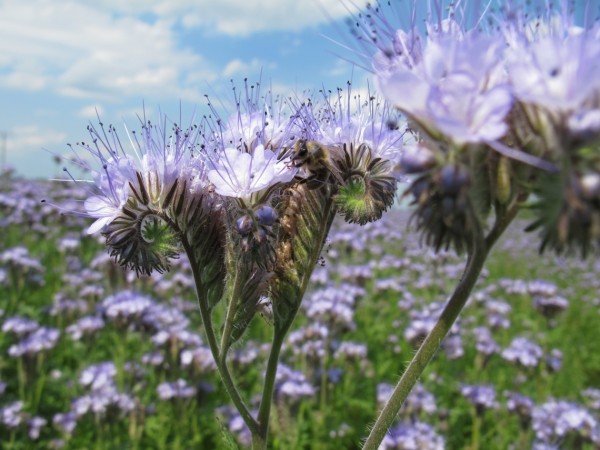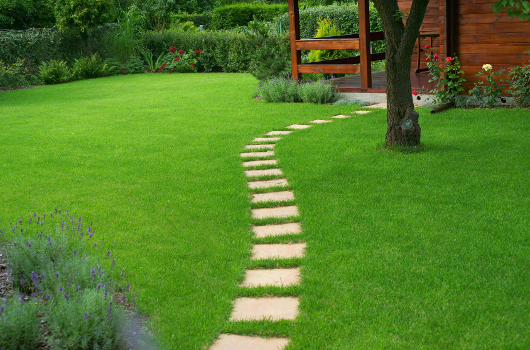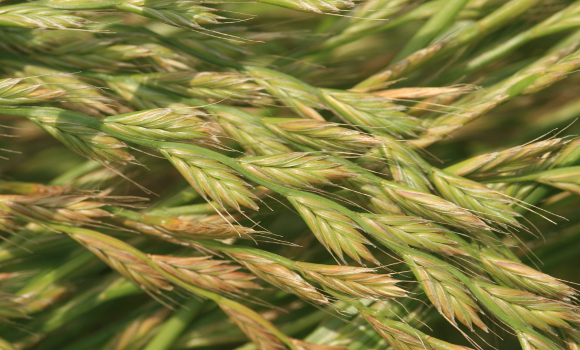MANUAL
Establishing a lawn
- SOIL PREPARATION
- SOWING
- INITIAL MAINTANANCE
Before we begin work on establishing a new lawn, we need to:
- get rid of the old lawn or its remains either mechanically, or chemically with the use of herbicides.
- if possible, fertilize the entire surface with compost soil, or mix the top layer of the soil with deacidified peat; it is also beneficial to apply lime in order to balance soil acidity
- apply multi-component fertilizer; the dosage is dependent on fertilizer type and soil fertility.
- turn the soil over with a spade or plough at the depth of 20-25cm.
- level the surface and roll it.
After rolling we need to wait for around two weeks. If the soil contains a lot of weed seeds, they will begin germinating by now. It is beneficial to apply herbicide again (this will substantially decrease the number of weeds in our future lawn).
We begin sowing around 2 weeks after we have finished soil preparation. The standard sowing rate is 1 kg of seed per 40m2. New lawns can be established from the beginning of April until the end of September. Before sowing, we need to loosen the soil with a rake – this will create small furrows for the seed to fall into. We then divide the seed in two portions and sow them in two perpendicular runs with a drill or by hand. We need to rake the entire surface again after sowing ad roll it, in order to cover the seed and mix them with soil. Sowing should be performed when the soil is adequately wet, most conveniently before an anticipated rainfall.
It is necessary to frequently spray the soil with water, and in case of draught – to irrigate it profusely until seedling emergence i.e. during the first 1-3 weeks after sowing. Similarly, the soil should be kept adequately wet in later stages of plant development, i.e. during the next 6 weeks. First mowing should be performed when the plants are 8- 10cm tall – we should cut them at 5cm. Next mowing should be done when the grass grows back to 6-8cm; mowing height should be at 3-4 cm this time. The best visual effect is achieved through frequent mowing. In the period of intensive growth it is recommended to apply fertilization, according to instructions on the box/package. Fertilizer should not be applied on wet plants. It is not necessary to apply fertiliser after mid September or before expected frosts.
In a well tended lawn, weeds are held in check by the intensive development of grasses. In case of excessive weed emergence we can apply herbicides, strictly adhering to the instructions on the box.
Renovation of grasslands
- REGENERATION
- RENOVATION BY OVERSOWING
- FULL SOIL CULTIVATION AND RESOWING
The first method of improving the botanical composition of the sward is through REGENERATION.
For our treatment to be effective, we first need to ascertain whether our grassland contains a majority of valuable grass and legume species. If this is the case, we may proceed with destroying the weeds by means of herbicides. Once the weeds show first signs of herbicide effects, we can proceed with profuse mineral fertilization, which will stimulate intensive development of the valuable species. The standard dose is 70-80kg of phosphorus /ha 50-60kg of potassium/ha and 50-70 kg of nitrogen/ha applied after spraying with herbicides, and a similar dose of fertilizers (except for phosphorus) after the first cut. REGENERATION significantly increases the quantity and quality of the produced forage already in the first year after application.
The second method of improving the botanical composition of our grassland is RENOVATION BY OVERSOWING.
This treatment consists of introducing missing grass and legume species into the sward. This is performed when over 50% of the acreage is infested with weeds or low quality forage species. In case of heavy weed presence we can apply herbicides and fertilizer just as with REGENERATION. We then have to partially destroy the old sward with the use of a medium or heavy harrow (in two perpendicular runs) in order to create space for plants which we intend to over-sow. The next step is to sow the desired seed; we perform this with the use of a traditional drill with removed coulters, sowing the seed directly onto the sward. We use a light harrow after sowing; this will mix the seed in with the soil. We then roll the whole surface and apply nitrogen fertilization in the tillering phase. It is also possible to over-sow with the use of specialist drills which cut the existing sward and introduce the seed directly into the topsoil. A grassland renovated by means of the above-described techniques significantly increases its production potential, providing forage of decidedly better quality already in the first year after renovation.
The third method which we can use to increase the productivity of our grassland is by performing FULL SOIL CULTIVATION and RESOWING.
We use this method when valuable species are either missing or significantly dominated by onerous weeds. On mineral soils, we perform ploughing to a depth of ca. 20 cm, usually in autumn with the use of a plough which turns the sward over fully. We leave the soil thus prepared until springtime. In case of peat soils, w perform the ploughing in spring, and we use aggregates for all other procedures in order to minimize soil structure damage. Before plowing is effected it is very advantageous to apply calcium fertilizers in doses of 1,5 to 2 tons/ha; this will ensure good distribution of calcium within the soil structures. In spring time, we further cultivate the soil with a ripper and roll it. Immediately before sowing we apply organic fertilization at 60-80kg of phosphorus nad 80-100kg of potassium per hectare. This method of grassland renovation is the most expensive and time consuming of all three presented, but allows for obtaining profuse and high quality forage in the coming years, commencing already in the year of sowing.
ATTENTION! The choice of a suitable grass mixture necessary for grassland establishment or renovation should be based on intended usage, as well as detailed knowledge of the specific soil and climate conditions of the stand.






